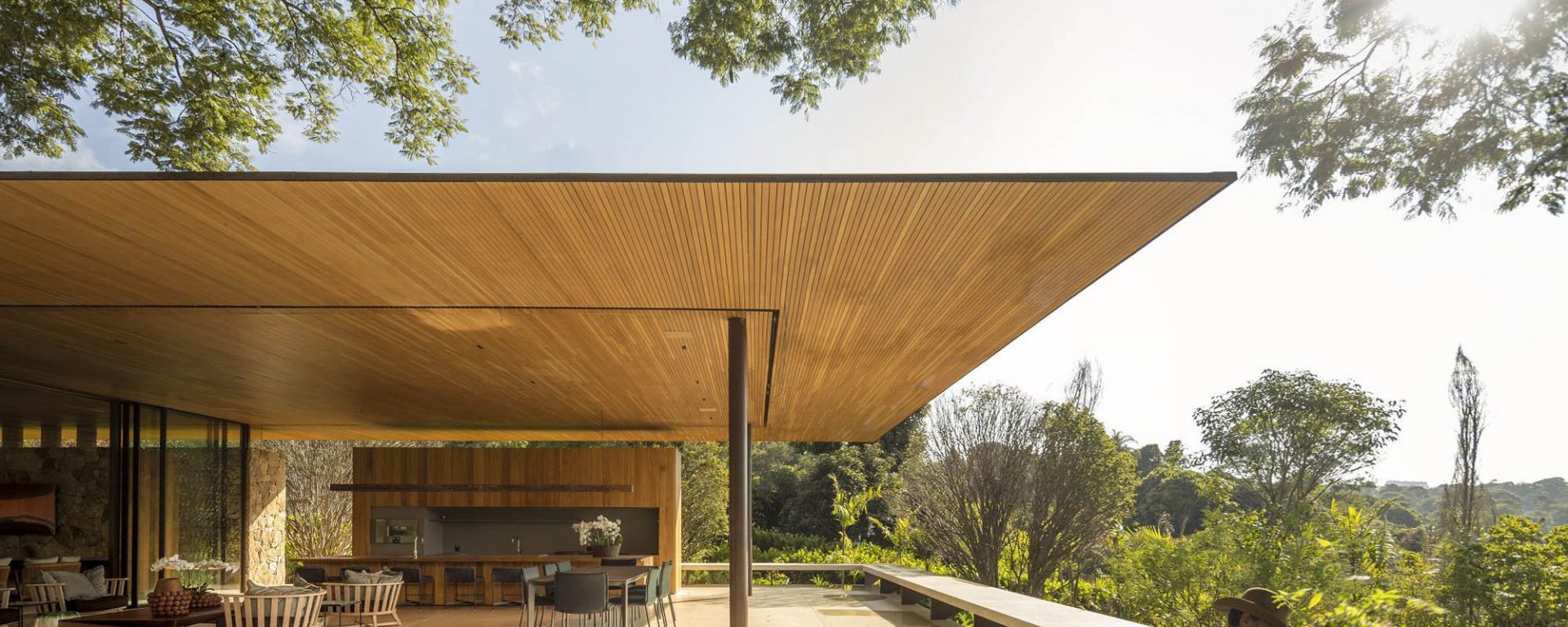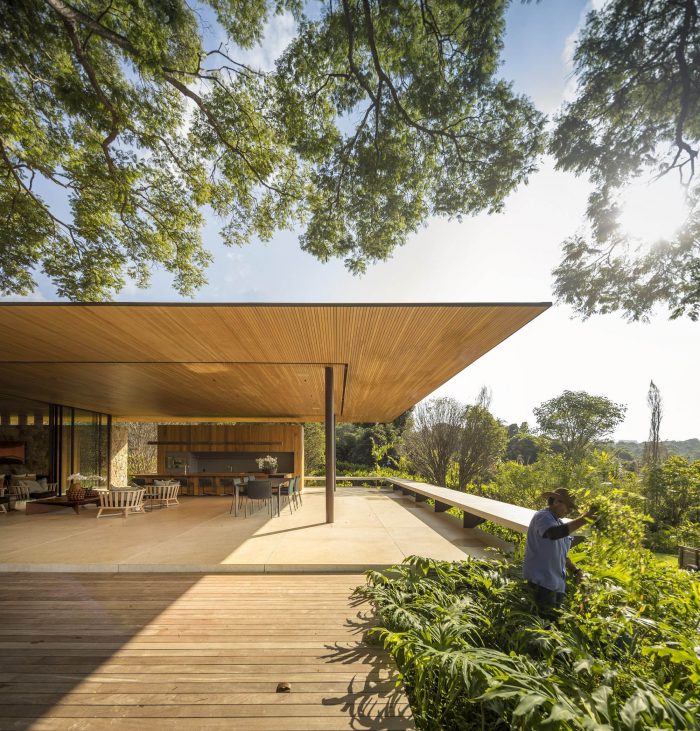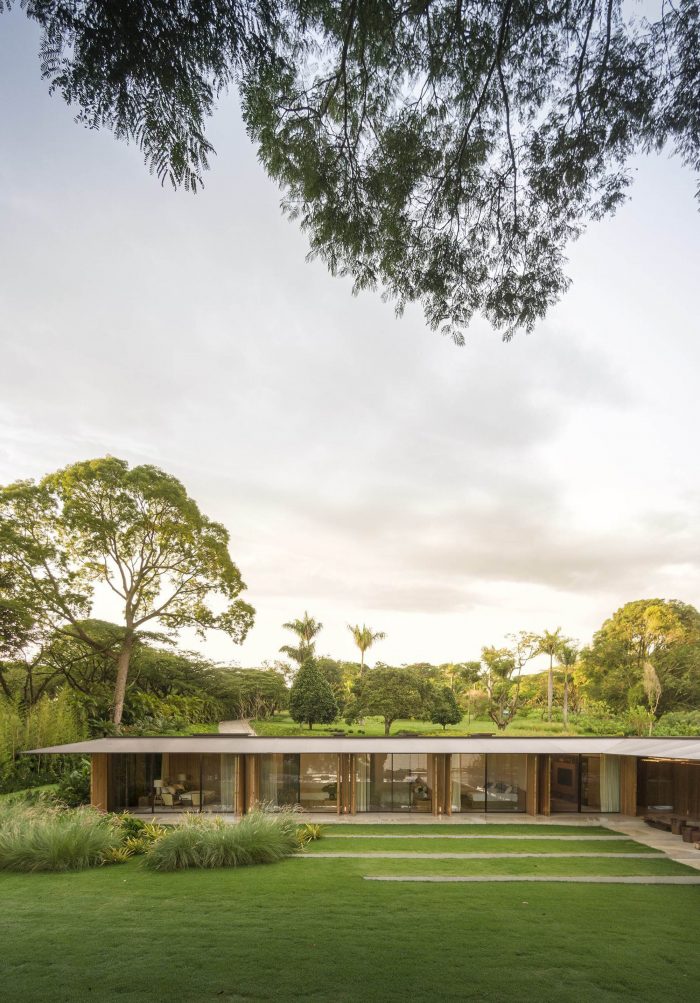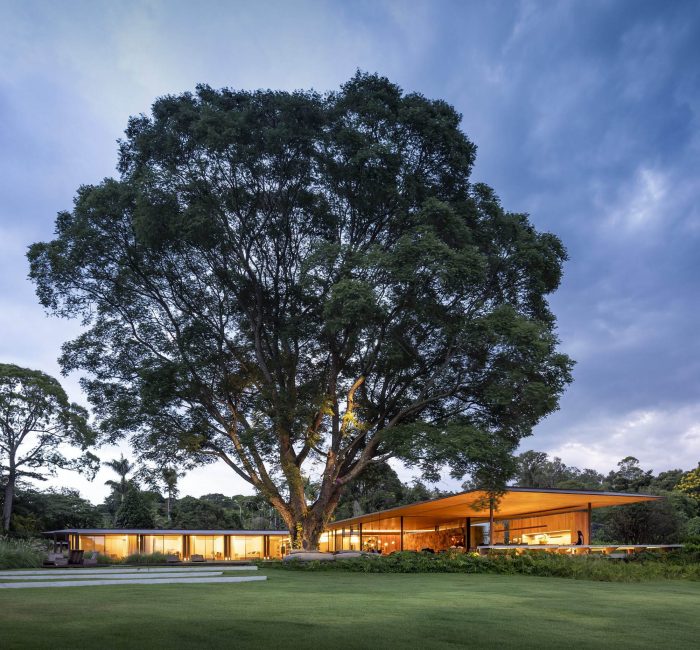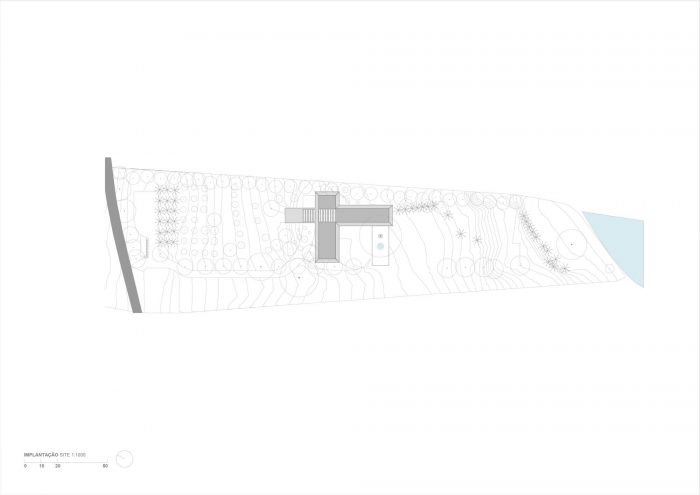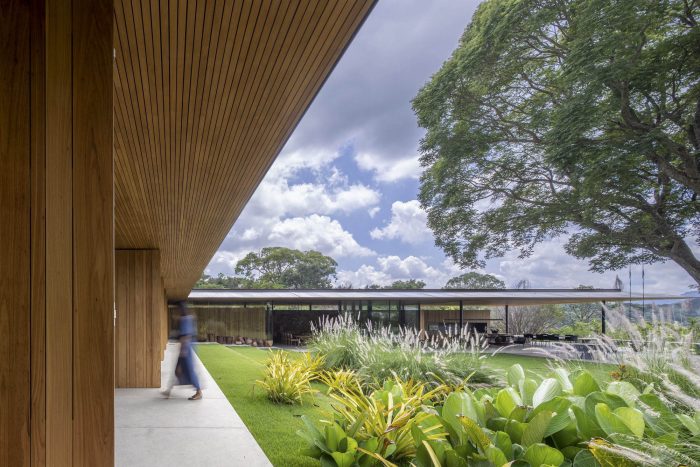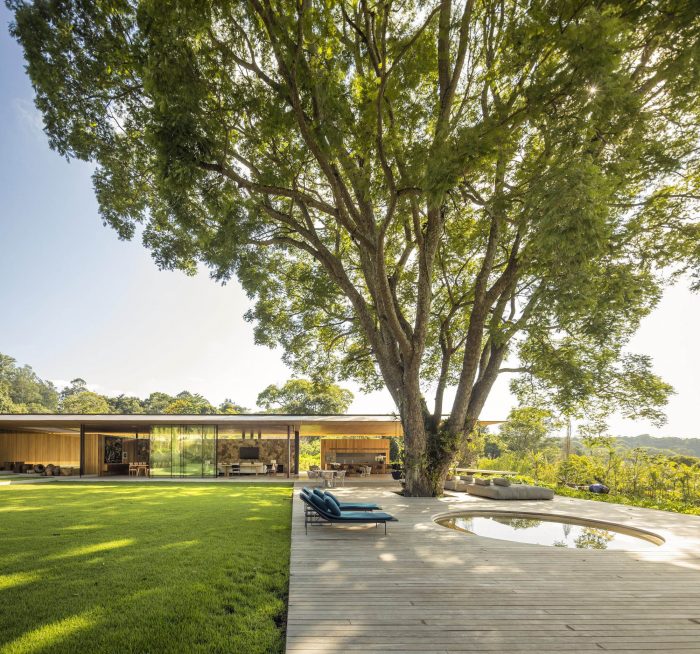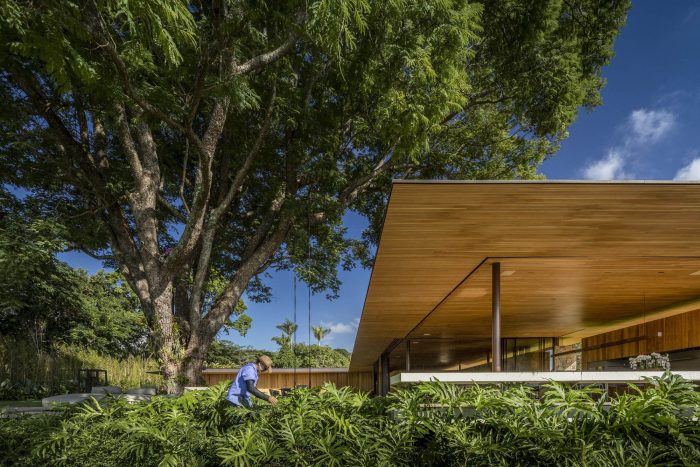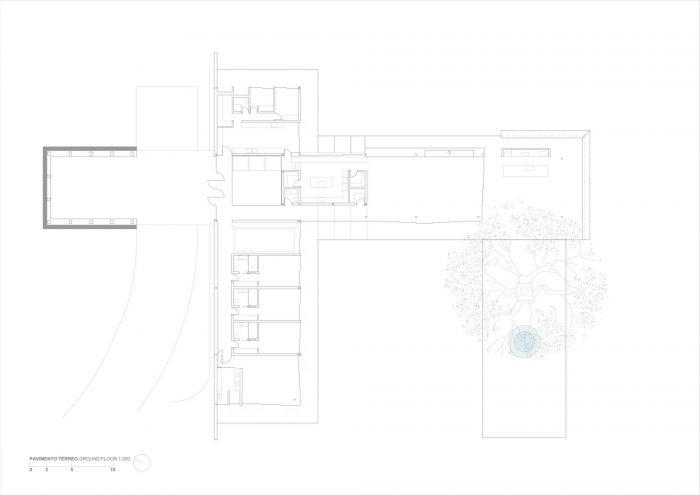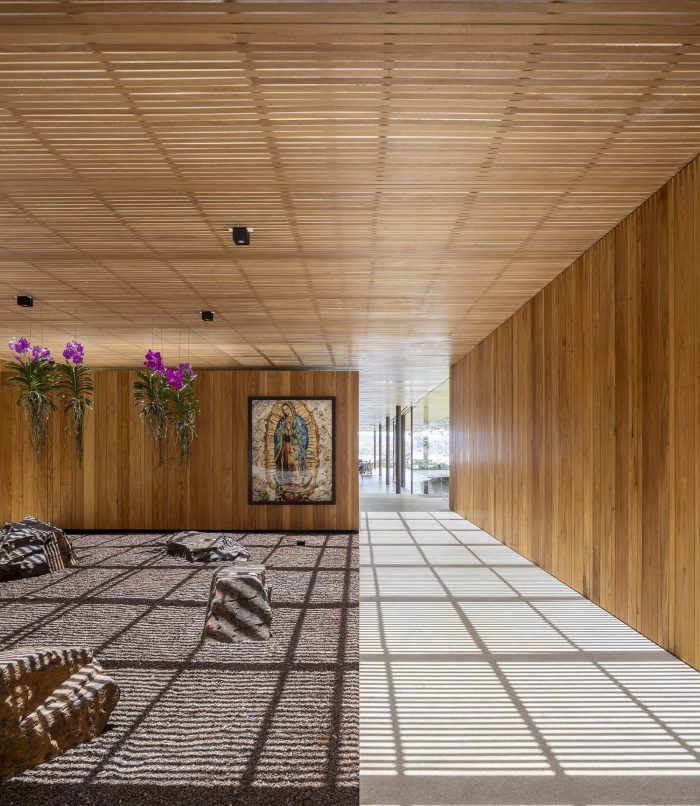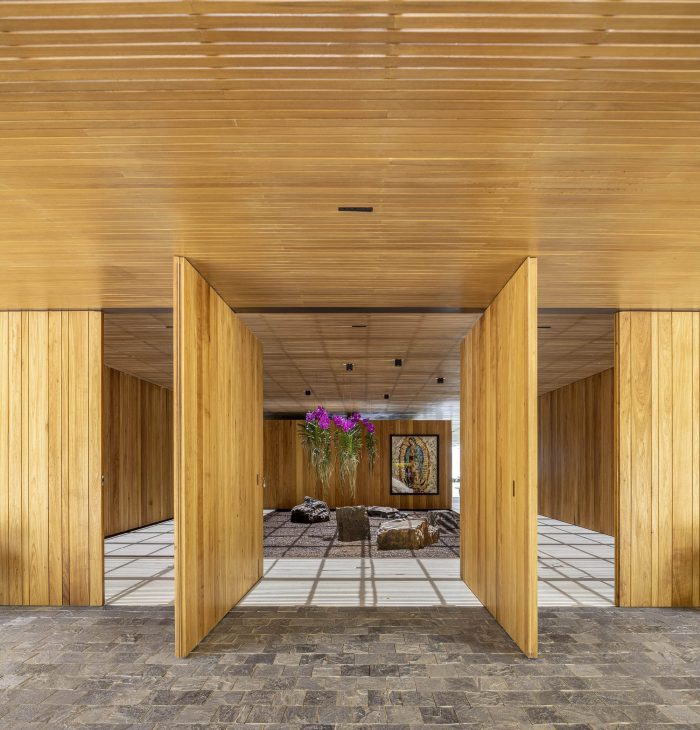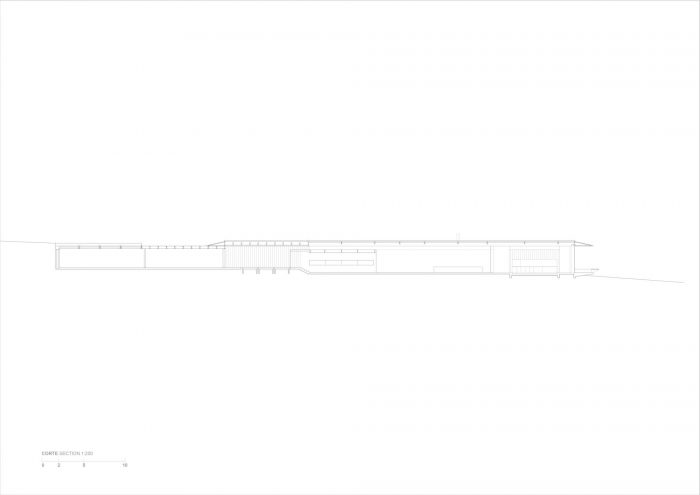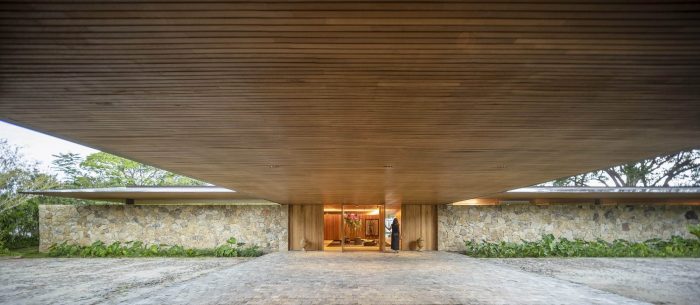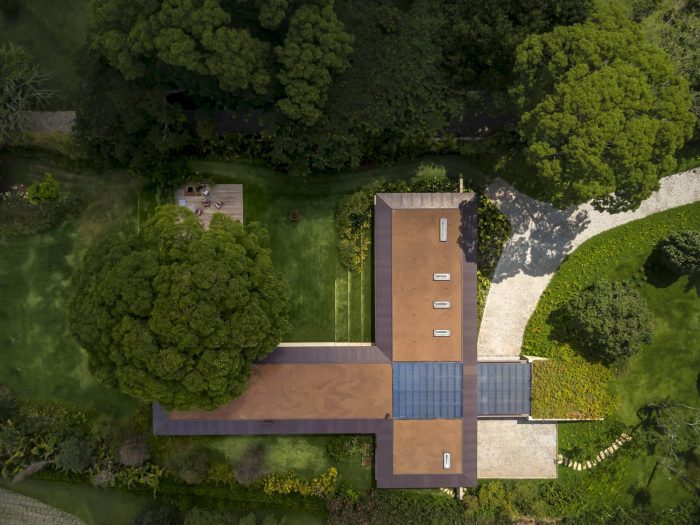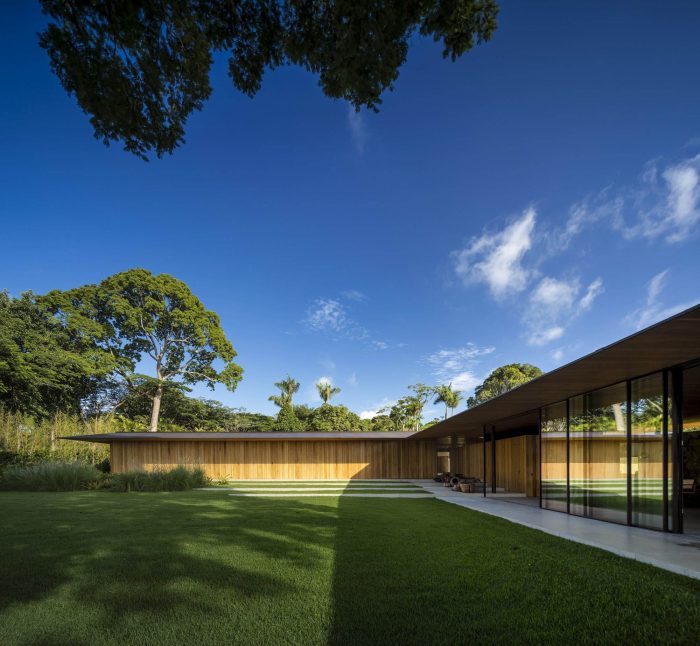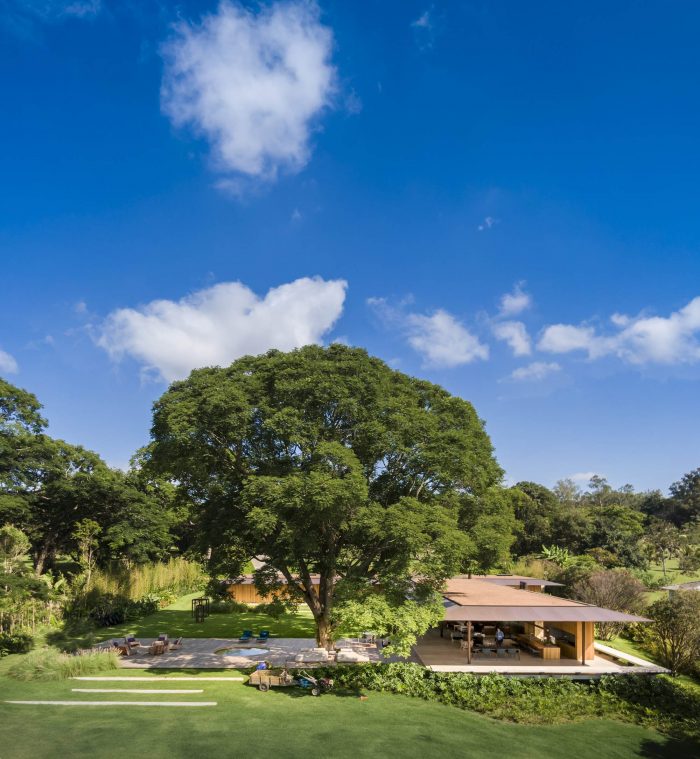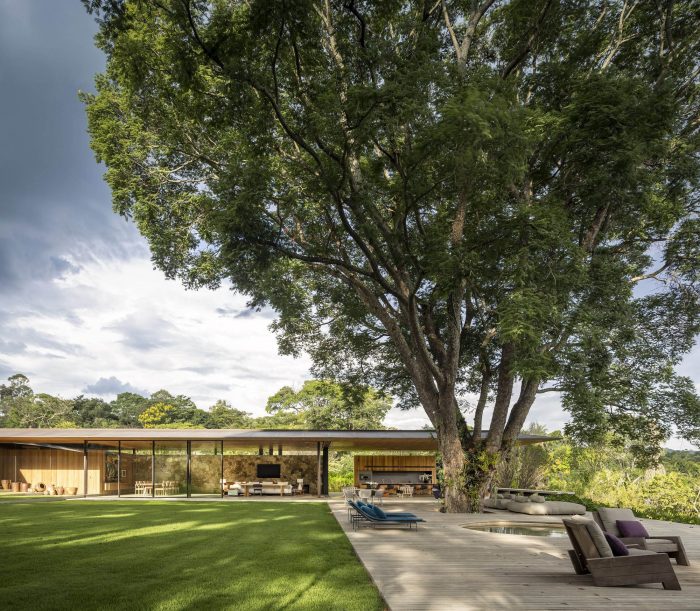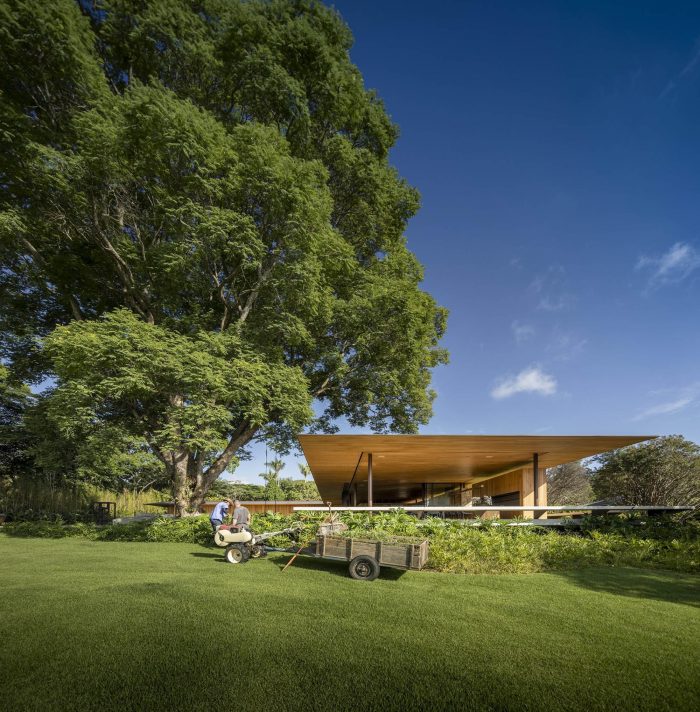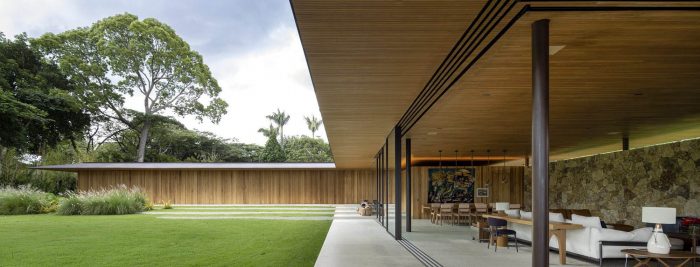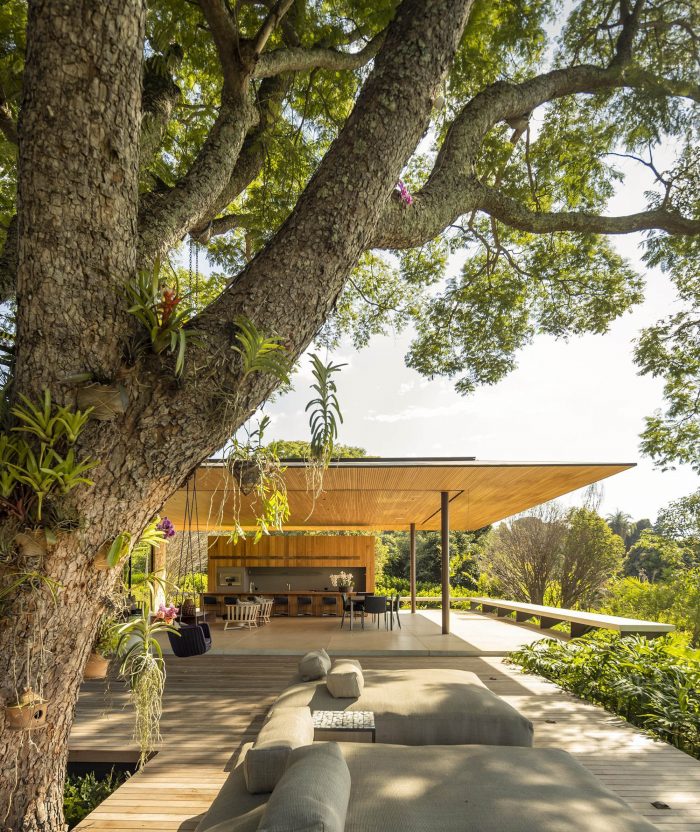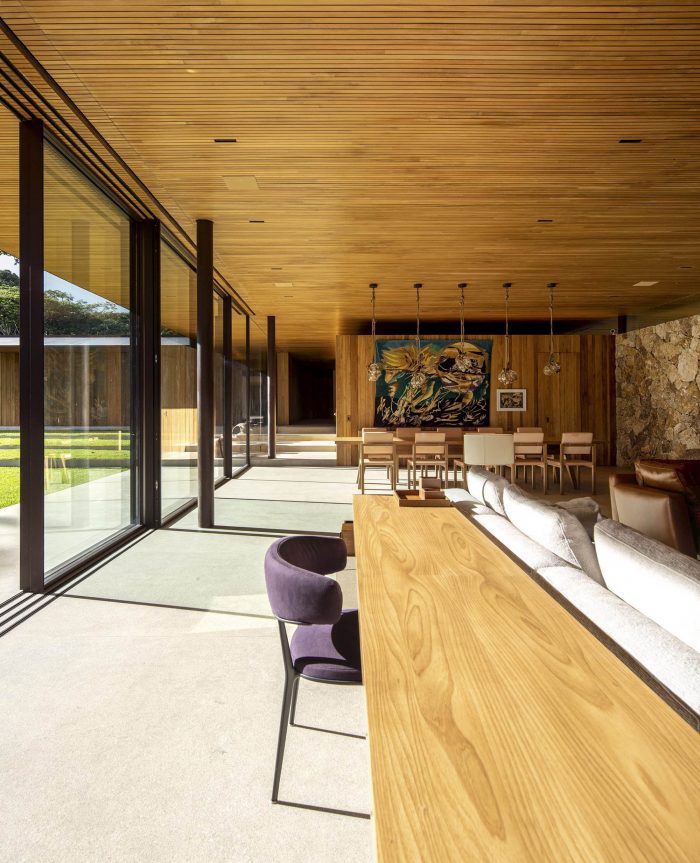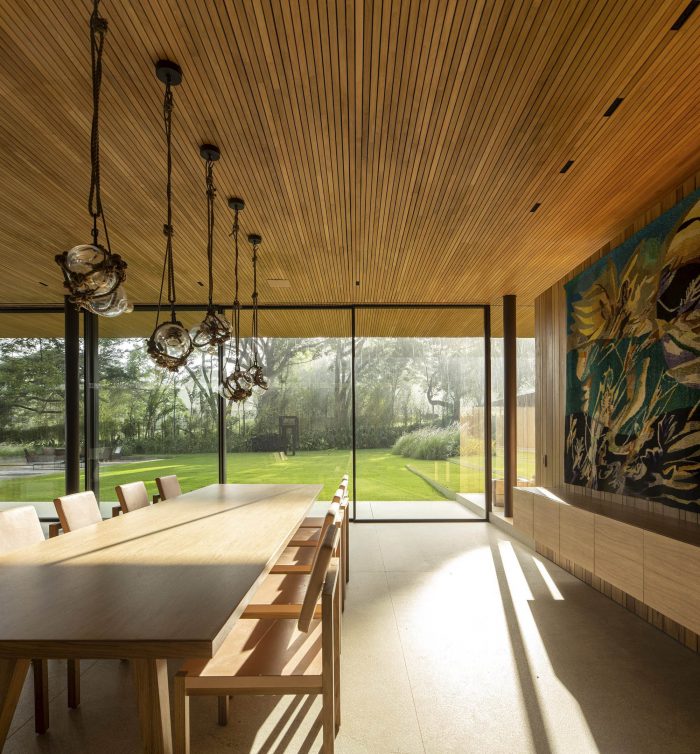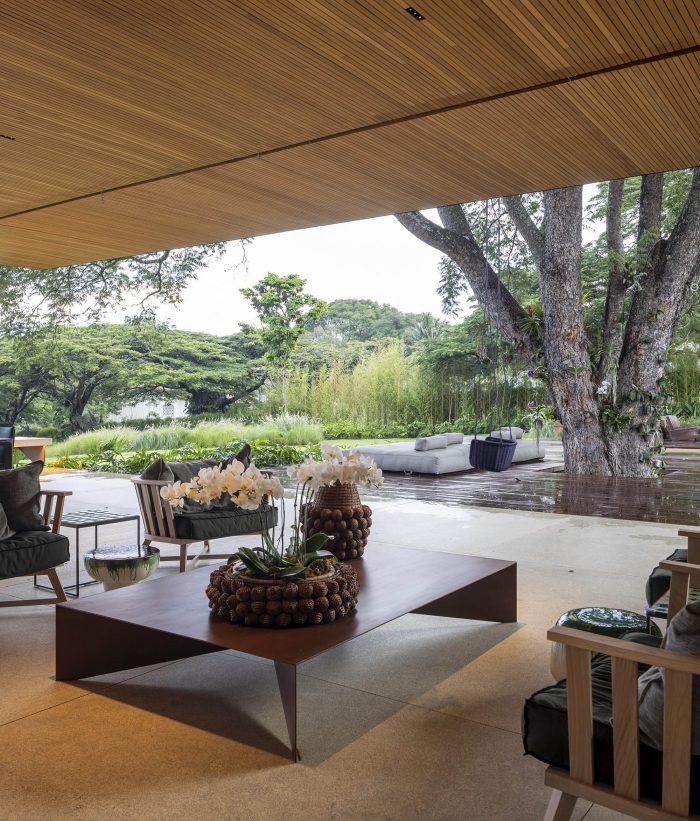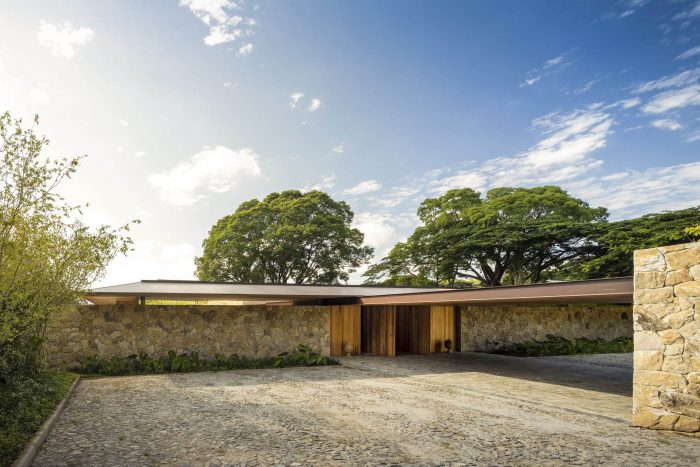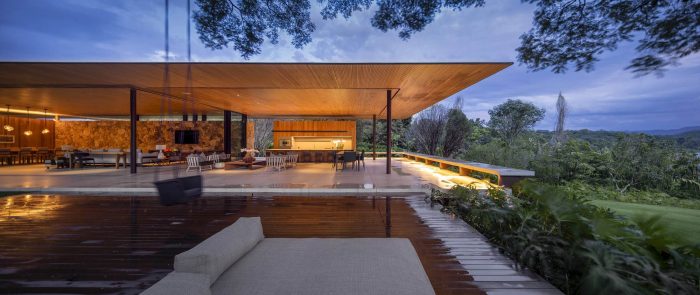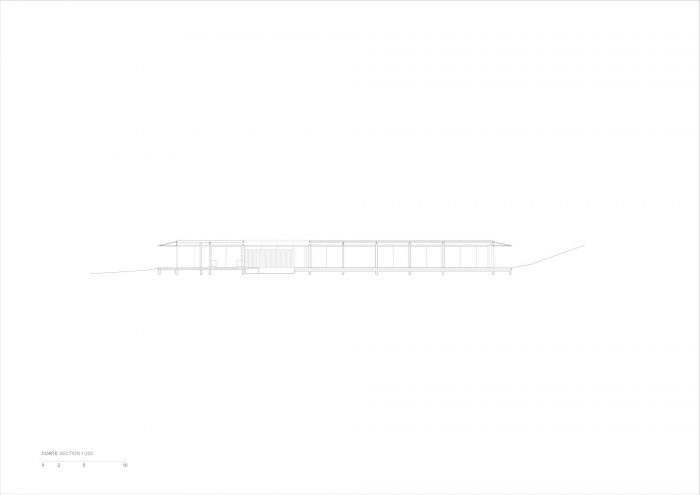RN住宅是为一对夫妇设计的,他们的孩子和孙子在一个大坝的边缘度过他们的周末和假期,在一个愉快的地方,建筑和自然之间融合的可能性很突出。
The RN residence was designed for a couple, for their children and grandchildren to spend their weekends and vacations on the edge of a large dam, in a pleasant place where the possibilities of integration between architecture and nature stand out.
从对项目现场的初步考察中,我们已经发现了主导景观的大坝的风景潜力。为了利用现场存在的众多航海娱乐选择,在水边建造了几座避暑屋。一般来说,这些房子的位置尽可能地靠近水线。在家族自己的土地上,有一栋房子靠近大坝而建。
From the initial visits to the project site, we have identified the scenic potential of the large dam that dominated the landscape. To take advantage of the numerous options for nautical entertainment present at the site, several summer houses were built next to the water. In general, these houses were located as close as possible to the water line. On the family’s own land, there was a house set up close to the dam.
对现场的分析使我们能够确定指导项目发展的原则。在现有房屋的后面有一棵令人惊奇的、枝繁叶茂的本地树,属于Vinhático品种。我们甚至注意到,由于平滑的地形,从较高的角度看,大坝的视野更宽阔,没有遮挡,与水面的关系也更退缩。
The site’s analysis allowed us to identify the principles that would guide the development of the project. There was an amazing leafy native tree, of the Vinhático species, at the back of the existing house. We even noticed that the view of the dam was wider and unobstructed from a higher point of view and retreated in relation to the water, due to the smooth topography.
这样一来,项目就围绕着树来发展,这样我们就可以创造一个大的平坦的景观区,由树根的水平来定义。底层是平面和不对称的,框住了院子,它被房间和阳台横向划定,在后面是卧室。通过这种空间配置,住宅的所有房间都能看到外部区域的广阔视野。
In this way, the project was developed around the tree, so that we could create a large flat and landscaped area, defined by the level of the roots. The ground floor, plan and asymmetric, frames the courtyard, which is delimited laterally by rooms and balconies and, at the back, by the bedrooms. With this spatial configuration, all the rooms of the residence had a wide view of the external area.
建筑设计的另一个重要因素是在树冠下建立一个木质平台,以一种自然的方式将房子和花园连接起来。值得注意的是,服务区是在汽车通道旁边的横向方向上。在这个地方,有转动的门,打开入口大厅,那里有一个铁矿石的 “花园”,回顾了该地区的生产使命,寻求与该地区的特性建立联系。
Another important element for the architectural design was the creation of a wooden deck under the canopy of the tree, which connects the house to the garden in a natural way. It is important to note that the service areas are laterally oriented next to the car access. In this place, there are pivoting doors that open the entrance hall, where a “garden” of iron ore stones recalls the region’s productive vocation, seeking to establish connections with the specificities of the region.
根据这一推理,我们尝试使用了参考巴西 “农舍 “类型的装饰材料。在这个意义上,花岗岩出现在石墙和社会区域的地板上。我们还选择使用Freijó木材,用于天花板和卧室的空心板。木材在项目的发展中起着核心作用,允许配置一个现代的空间概念。提供外部和内部区域的整合,木材的使用与创造具有过滤自然光的空间有关,此外还有助于重要艺术品的展览和住宅的内部家具。
Following this reasoning, we experimented using finishing materials that refer to the typology of the Brazilian “farmhouse”. In this sense, the granite appears both on stone walls and on the floors of social areas. We also choose to use the Freijó wood applied to the ceiling and to the hollow panels of the bedrooms. The wood takes a central role in the development of the project, allowing the configuration of a contemporary spatial concept. Providing the integration of external and internal areas, the use of wood was linked to the creation of spaces endowed with filtered natural light, in addition to contributing to the exhibition of important pieces of art and the internal furniture of the residence.
Architects: Jacobsen Arquitetura
Area: 1250 m²
Year: 2020
Photographs: Fernando Guerra | FG+SG
Team:Paulo Jacobsen, Bernardo Jacobsen, Edgar Murata, Marcelo Vessoni, Christian Rojas, Daniel Arce, Fábio Fridman
Interior Design:Jacobsen Arquitetura
Interior Design Team:Marcela Guerreiro, Thammy Nozaki, Marcela Penteado
Landscape Design:Rodrigo Oliveira
Lighting Design:Foco
Electrical And Hydraulic Installations:Grau
Air Conditioning:Grau
Structure:Projen
Construction:Hauz
Site Area:26650.0 m²
Project Begining Year:2016
City:Itaúna
Country:Brazil

